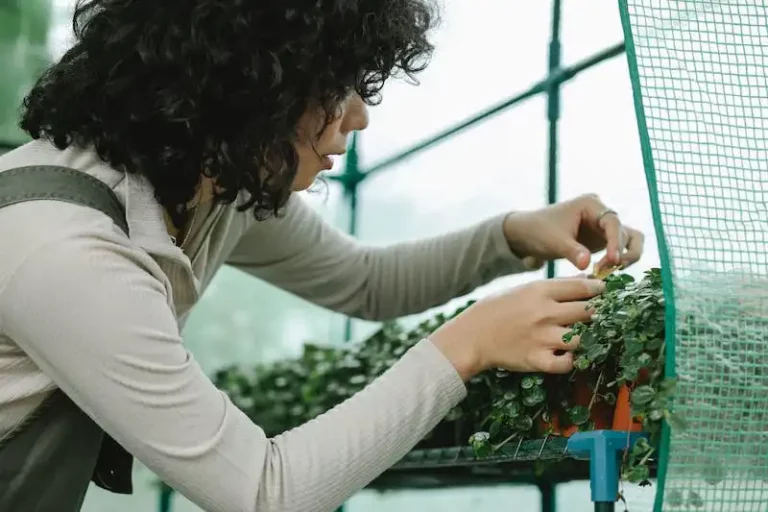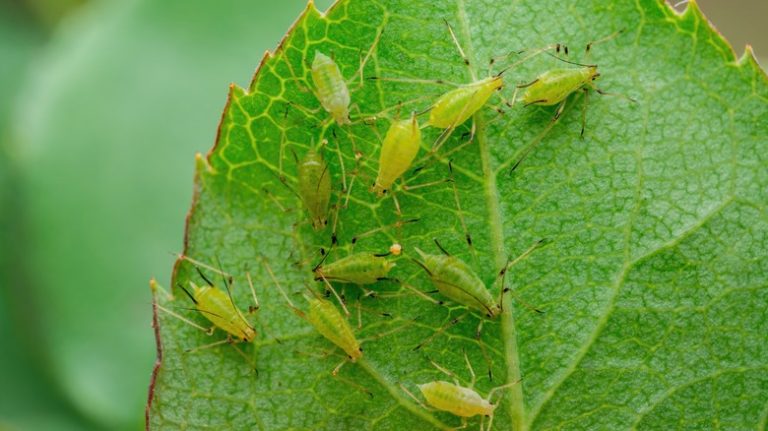Astilbe is a brilliant flowering plant that is often referred to as the “queen of the shade garden.” These plants are native to North America and have become a favorite among gardeners thanks to their vibrant and long-lasting blooms. Astilbes are known for their feathery plume-like flowers that come in a variety of colors, including shades of red, pink, white, and purple. They are also popular with pollinators, making them a great choice for attracting bees, butterflies, and hummingbirds to your garden.
When it comes to planting astilbes, it’s important to choose a location that receives partial shade or morning sun. These plants prefer moist soil and high humidity, so be sure to prepare the planting area by amending the soil with compost and peat moss to help retain moisture. Astilbes can be grown from crowns, divisions, or seeds, and they should be spaced about 10 inches apart to allow for proper air circulation.
Astilbes are relatively low-maintenance plants, but they do require some care to keep them looking their best. Watering is essential, especially during periods of drought or prolonged dryness. It’s best to water at the base of the plant to avoid wetting the leaves, which can lead to fungal diseases. Removing spent flowers helps promote continuous blooming and prevents the plant from spreading through self-seeding.
Fertilizing astilbes is also important to ensure healthy growth. Use a balanced fertilizer in early spring and again in early summer to provide the nutrients the plant needs. Be careful not to over-fertilize, as this can lead to excessive foliage growth and reduced flowering.
In addition to regular care, astilbes may need occasional attention to prevent damage from pests and diseases. Common pests include woodchucks and weevils, which can eat the leaves and flowers. Applying an organic insecticide or using physical barriers can help protect the plants from these pests.
In summary, astilbes are beautiful perennials that add a touch of color and elegance to any garden. With proper care and maintenance, they can provide a quick display of stunning flowers year after year. Whether you’re a beginner or an experienced gardener, astilbes are an exciting addition to your landscape. So, prepare your soil, decide on a space, and start growing these amazing plants to enjoy their beauty during the flowering season.
How To Grow And Care For An Astilbe Plant
Astilbe plants are popular for their beautiful plume-like flowers that come in a variety of bright colors. They are perfect for adding a touch of elegance and beauty to any garden or landscaping arrangement. If you are a beginner in gardening, astilbe is a great choice as it is relatively easy to grow and care for. Here is a step-by-step guide on how to grow and care for an astilbe plant:
Growing Astilbe
1. Choose a desired location: Astilbes grow best in partially shaded areas, preferably in the morning sun and afternoon shade. They can tolerate full shade, but the plants might not produce as many blooms.
2. Prepare the soil: Astilbes prefer moist, well-drained soil. Add organic matter like compost or peat moss to improve the soil’s fertility and drainage. Avoid heavy clay soils or sandy soils, as they can cause drainage issues.
3. Plant the astilbe: Dig a hole slightly larger than the root ball of the plant. Place the astilbe in the hole, making sure the crown is at or slightly above the soil level. Backfill the hole with soil and gently firm it around the plant.
4. Watering: Astilbes have high moisture needs, especially during the growing season. They should be watered regularly to keep the soil evenly moist. Avoid overwatering, as it can lead to root rot.
5. Fertilizing: Fertilize astilbe plants in the spring using a slow-release, balanced fertilizer. Follow the manufacturer’s instructions for application rates. Avoid excessive fertilizing, as it can result in lush foliage but fewer blooms.
6. Weed prevention: Keep the area around the astilbe plants free from weeds. Weeds compete for nutrients and moisture, affecting the overall health and growth of the plants.
Caring for Astilbe
1. Pruning: Remove spent flowers and old foliage throughout the growing season to maintain a neat appearance. In late fall or early spring, cut back the entire plant to encourage healthy growth for the following season.
2. Pests and diseases: Astilbe plants are generally resistant to pests and diseases. However, they can be susceptible to slugs, snails, and weevils. If you notice any signs of pest damage, address the issue promptly using appropriate pest control methods.
3. Propagation: Astilbes can be propagated through division. Divide the plant’s crowns every three to four years to prevent overcrowding and improve bloom production. Dig up the plant, separate the crowns, and replant them in a suitable location.
4. Winter care: Astilbes are hardy plants but benefit from a layer of mulch to protect their roots during the winter. Apply a layer of mulch around the plants before the first frost to help retain moisture and regulate soil temperature.
Astilbe plants are a beautiful addition to any garden or landscape. By following these care instructions, you can enjoy their stunning blooms and fern-like foliage throughout the growing season. If you have any questions or need more information, consult a local gardening expert or nursery for further assistance.
How to use astilbe in your garden
Astilbe is a beautiful and versatile plant that can add a touch of color and texture to any garden. Whether you have a large outdoor space or a small balcony, astilbe can be a wonderful addition to your gardening repertoire. With their fern-like foliage and vibrant plume-like flowers, astilbes can provide an exciting and colorful display in your garden for many years to come.
One of the great things about astilbes is that they are well-suited to a wide range of gardening conditions. They are native to areas with high humidity and can thrive in similar conditions. However, they can also tolerate slightly drier conditions, making them suitable for a variety of climates. If your garden doesn’t receive much rainfall, be careful to provide astilbes with enough water to prevent wilting.
Astilbes are also known for their ability to brighten up shady areas of the garden. While they can handle a variety of light conditions, they do best in bright, indirect sunlight. If you have a shady spot in your garden that could use a pop of color, consider planting astilbes there.
When it comes to design, astilbes offer a range of options. There are many different varieties of astilbes available, with flowers in shades of white, pink, purple, and red. Some astilbes also have variegated foliage, adding extra interest to their appearance. By choosing a mix of different astilbe varieties, you can create a stunning and dynamic display in your garden.
Caring for astilbes is relatively easy. They prefer moist, well-drained soil, so be sure to choose a planting location that meets these requirements. Regular watering and mulching can help to maintain the moisture levels in the soil, which is essential for astilbe health. Fertilizing astilbes once a year in the early spring can also help to promote healthy growth and blooming.
Propagation of astilbes can be done through division or through planting seeds. Dividing astilbe clumps every few years helps to keep the plants healthy and prevent overcrowding. Planting astilbe seeds can be a bit more challenging, as they often require a period of cold stratification before they will germinate.
Astilbes are relatively pest and disease-resistant, but it’s still important to keep an eye out for potential problems. Some common pests that can affect astilbes include slugs and Japanese beetles. Regular inspection and prevention measures can help to keep these pests at bay. Diseases that can affect astilbes include powdery mildew and crown rot. Maintaining good air circulation around the plants and ensuring that the soil is not too wet can help to prevent these issues.
Astilbes can attract pollinators to your garden, including bees and butterflies. These insects are essential for the pollination of many plants and can help to promote a healthy and vibrant garden ecosystem.
With proper care and attention, astilbes can provide a stunning display in your garden throughout the growing season. From their beautiful foliage to their long-lasting flowers, astilbes offer everything you could want in a perennial plant. By pruning the spent plumes and foliage, you can encourage continued blooming and ensure that your astilbes look their best all season long.
So why not consider adding astilbes to your garden? The wide range of colors, sizes, and textures available make them suitable for any garden design. Whether you choose to plant them in borders, containers, or even in a dedicated astilbe bed, these versatile plants are sure to bring beauty and interest to your outdoor space.
How to grow an Astilbe plant
Growing Astilbe plants can be a rewarding experience for beginners and seasoned gardeners alike. These beautiful perennials add a pop of color to any garden and are known for their feathery plumes of flowers that bloom throughout the summer. If you’re interested in growing Astilbes, here are some tips to ensure their success:
1. Choose the right location: Astilbes thrive best in partially shaded areas with moist, well-drained soil. They can tolerate some sunlight, but too much heat can cause their foliage to wilt. Ensure that the soil has good drainage to prevent waterlogging.
2. Planting: Astilbe plants can be planted in containers or directly in the ground. If planting in containers, use potting mix with good drainage. Astilbe plants should be spaced about 18-24 inches apart to allow for their growth.
3. Watering: Astilbes require regular watering, especially during dry periods. Water the plants deeply and frequently to keep the soil evenly moist, but not waterlogged. Avoid overhead watering as it can lead to fungal diseases. Daily watering is often necessary during hot summer months.
4. Fertilizing: Astilbe plants benefit from a slow-release fertilizer applied in early spring. This will provide them with the necessary nutrients throughout the growing season. Be careful not to overfertilize, as it can lead to leggy growth and fewer flowers.
5. Pruning: Remove spent flowers to encourage more blooms and maintain a tidy appearance. In late fall or early spring, cut back the foliage to the ground to make way for new growth.
6. Pest control: Astilbes are generally resistant to pests and diseases, but they can attract beetles. If you notice any damage or beetles on your plants, you can try putting up yellow sticky traps or using an organic insecticide or fungicide.
7. Variety selection: There are many different varieties of Astilbe to choose from, each with its unique qualities. Some dwarf varieties are perfect for smaller spaces or containers, while others can grow up to 5 feet tall. Consider the height, color, and blooming time of the varieties to create a stunning display.
8. Winter care: Astilbes are hardy plants, but in colder regions, they may need some extra protection during winter. Mulch around the base of the plants to help insulate the roots and prevent freezing.
By providing the right growing conditions and following these tips, you can enjoy the beauty of Astilbe plants throughout the growing season. Their stunning flowers and attractive foliage will brighten up any garden or container.



